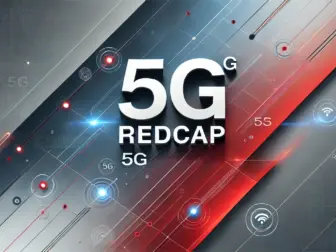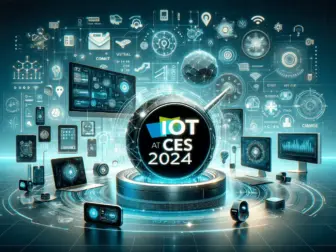Tag - IoT Trends
Blog, IoT Protocols and Interoperability , December 27, 2024 , 5G RedCap, cellular modules, connectivity technology, Industrial IoT, iot, IoT Trends, smart wearables, video surveillance
Blog , January 11, 2024 , CES 2024, Consumer Electronics, internet of things, iot, IoT Trends, smart Home
Emerging IoT Trends Shaping the Future of Connected Devices in 2023
Emerging IoT Trends Shaping the Future of Connected Devices in 2023
As we delve into 2023, the Internet of Things (IoT) continues to evolve at an impressive pace, with new trends emerging that are reshaping how we interact with technology and the world around us. The IoT landscape is being driven by advancements in various fields, including artificial intelligence (AI), machine learning, edge computing, and more. Here, we explore some of the most significant IoT trends to watch this year.
One of the most noteworthy trends is the increased integration of AI and machine learning into IoT devices. This powerful combination is enabling smarter and more autonomous systems capable of predictive maintenance, enhanced data analytics, and improved decision-making processes. IoT devices can now learn from patterns, anticipate problems, and offer solutions without human intervention, which is revolutionizing industries such as manufacturing, healthcare, and smart homes.
Edge computing is another trend gaining traction in the IoT sphere. By processing data closer to the source (i.e., the IoT devices themselves), edge computing reduces latency, enhances data processing speeds, and mitigates bandwidth issues. This is particularly beneficial for applications that require real-time analysis and responses, such as autonomous vehicles and industrial automation.
The expansion of 5G technology is set to turbocharge IoT connectivity, offering faster speeds and more reliable connections. With 5G, IoT devices can communicate and share data more efficiently, paving the way for more complex and responsive IoT ecosystems. This is expected to spur the growth of smart cities and enable new use cases for IoT in areas like telemedicine, emergency response, and environmental monitoring.
Security is a growing concern in the IoT space, and there is a trend toward more robust security protocols and standards. As the number of connected devices skyrockets, so does the potential attack surface for cyber threats. In response, manufacturers and developers are embedding advanced security features at the hardware and software levels, and adopting end-to-end encryption to safeguard data transmission and storage.
Sustainability is becoming a key focus for IoT initiatives. IoT technologies are being leveraged to monitor and reduce energy consumption, manage waste, and support renewable energy sources. Smart grids, intelligent transportation systems, and precision agriculture are a few examples where IoT is making an impact on sustainability efforts.
Consumer adoption of IoT devices is also on the rise, with smart home technology leading the charge. Voice assistants, smart thermostats, connected appliances, and health-tracking wearables are becoming commonplace in households. This growing consumer market is driving innovation and competition among tech companies, resulting in more affordable and user-friendly devices.
Finally, there is a trend toward open standards and interoperability in the IoT ecosystem. As the number of devices and platforms increases, the need for them to work together seamlessly becomes more critical. This has led to the development of universal protocols and frameworks that enable devices from different manufacturers to communicate and function as part of a cohesive system.
In conclusion, the IoT trends of 2023 are setting the stage for a more connected, intelligent, and efficient world. The intertwining of AI, edge computing, 5G connectivity, enhanced security, sustainability, consumer adoption, and interoperability are not only driving innovation but are also creating a more resilient and responsive IoT ecosystem. As these trends continue to unfold, we can expect to see transformative changes across various sectors, fundamentally altering how we live, work, and interact with our environment.

